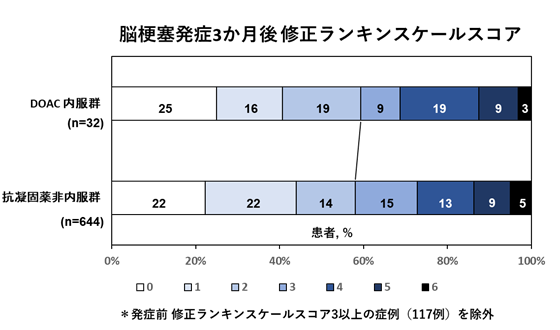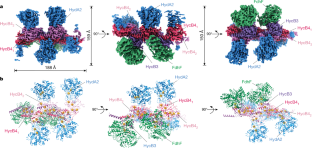2022-07-05 ペンシルベニア大学

・ ペンシルベニア大学が、虫歯菌や歯垢を除去する、酸化鉄ナノ粒子を使ったマイクロロボット技術を開発。
・ マイクロロボットは磁気的・触媒的特性を備え、磁場の制御によりそれらの構成と動作を変化させ、触媒による殺菌作用で口腔内を清潔に保つ。歯磨き、フロス、すすぎ等の、手動によるマルチステップの口腔ケアプロセスを、ハンドフリーの自動ロボティックシステムが担えるようになる。
・ マイクロロボットはあらゆる歯並びに適応し、広範囲の歯の表面から歯垢を取り除く毛状構造と、歯間を通るフロスのような長いひも状の構造を自動的に切り替え、ナノ粒子の触媒反応で生成される抗菌剤で有毒な口腔内細菌をオンサイトで除去する。
・ 歯ブラシのデザインは数千年間ほぼ変わっておらず、電気モーターを利用した電動歯ブラシであってもコンセプトは同様。マイクロロボットシステムによる破壊的技術の創出を狙う試み。
・ 過酸化水素を活性化させ、虫歯菌を殺菌して歯垢によるバイオフィルムを分解する、フリーラジカルを生成する酸化鉄ナノ粒子の触媒活性研究と、磁場制御式マイクロロボットの構成要素としての酸化鉄ナノ粒子の研究を統合し、ナノ粒子の自己集合と動作制御をプログラムできるシステムを開発した。
・ マイクロロボットの動作を最適化し、3D プリント作製した歯型モデルを使用して歯の表面、歯間表面、歯肉線縁の複雑な形状への適応性を調整。最終的に実際の人間の歯で試験を実施した。
・ その結果、マイクロロボットシステムがバイオフィルムを効果的に除去したことと、毛状構造が歯茎組織(動物モデル)を損傷しないことを確認。酸化鉄ナノ粒子は、米国食品医薬品局(FDA)が他用途に認可済み。
・ 磁場の調整でマイクロロボットの動作と毛状構造の硬さ・長さも制御可能。バイオフィルムを除去する硬さと同時に、歯茎を傷つけない柔軟性を毛状構造の先端に付与できる。使用者の口腔形状に合わせた、臨床・個人用途にカスタマイズ可能なシステムとして期待できる。
・ 歯科医での利用に向けてマイクロロボットの動作をさらに最適化し、マウスピースのようなデバイスによるマイクロロボットの供給方法等について検討する。
・ 本研究は、米国立歯科・頭蓋顔面研究所(NIDCR)、Procter & Gamble および大韓民国・成均館大学が支援した。
- URL: https://penntoday.upenn.edu/news/penn-dental-engineering-shapeshifting-microrobots-can-brush-and-floss-teeth
<NEDO海外技術情報より>
関連情報
ACS Nano 掲載論文(フルテキスト)
Surface Topography-Adaptive Robotic Superstructures for Biofilm Removal and Pathogen Detection
on Human Teeth
URL: https://pubs.acs.org/doi/10.1021/acsnano.2c01950
Abstract
The eradication of biofilms remains an unresolved challenge across disciplines. Furthermore, in biomedicine, the sampling of spatially heterogeneous biofilms is crucial for accurate pathogen detection and precise treatment of infection. However, current approaches are incapable of removing highly adhesive biostructures from topographically complex surfaces. To meet these needs, we demonstrate magnetic field-directed assembly of nanoparticles into surface topography-adaptive robotic superstructures (STARS) for precision-guided biofilm removal and diagnostic sampling. These structures extend or retract at multilength scales (micro-to-centimeter) to operate on opposing surfaces and rapidly adjust their shape, length, and stiffness to adapt and apply high-shear stress. STARS conform to complex surface topographies by entering angled grooves or extending into narrow crevices and “scrub” adherent biofilm with multiaxis motion while producing antibacterial reagents on-site. Furthermore, as the superstructure disrupts the biofilm, it captures bacterial, fungal, viral, and matrix components, allowing sample retrieval for multiplexed diagnostic analysis. We apply STARS using automated motion patterns to target complex three-dimensional geometries of ex vivo human teeth to retrieve biofilm samples with microscale precision, while providing “toothbrushing-like” and “flossing-like” action with antibacterial activity in real-time to achieve mechanochemical removal and multikingdom pathogen detection. This approach could lead to autonomous, multifunctional antibiofilm platforms to advance current oral care modalities and other fields contending with harmful biofilms on hard-to-reach surfaces.


